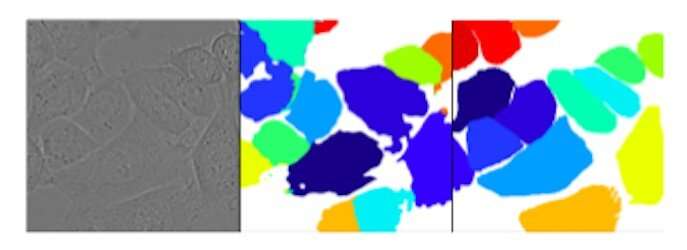Credit: Skolkovo Institute of Science and Technology
Skoltech researchers have presented a new biological image processing method that accurately picks out specific biological objects in complex images. Their results will be presented as an oral talk at the high-profile computer vision conference, CVPR 2020.
Biologists get a wealth of information in the form of biological images, which makes their automatic processing a formidable task. Researchers often have to handle images with a large number of objects, which is especially hard when it comes to microscopy images with overlapping objects and poor image quality and sharpness.
Machine Learning (ML) helps train the computer to process biological images, making data analysis much faster, more accurate and consistent across experiments.
Skoltech Computer Vision Laboratory of the Skoltech Center for Computational and Data-Intensive Science and Engineering (CDISE) put forward a new method for segmenting biological objects, such as individual cells, organisms and parts of plants, in complex images. The first author of the study was Victor Kulikov, who worked as a research scientist under the supervision of Skoltech professor Victor Lempitsky. The new method reduces the challenging object separation task to a simpler regression problem. This is achieved by introducing additional "harmonic" signals into the neural network's input layers and automatically tuning the signals' parameters to the typical size and arrangement of the objects to be isolated.
The scientists used four types of images: photos of plants, pictures with a large number of C. Elegants worms, microscopic images of E. Coli bacteria, and HeLa cancer cell culture images. Their two-step neural network training algorithm coped brilliantly with the task: trained for a selected image type, the neural networks outperformed other methods in isolating plant leaves, worms, cancer cells, and individual bacteria. The new method can be employed in scientific research and healthcare applications.
"A major advantage of the new method is that it can learn even from small datasets. We hope that our algorithm will find use in both biological research and other fields where labeled training images are hard to obtain," Lempitsky said.
More information: Instance Segmentation of Biological Images Using Harmonic Embeddings. arxiv.org/abs/1904.05257 arXiv:1904.05257v1 [cs.CV]
Provided by Skolkovo Institute of Science and Technology
























